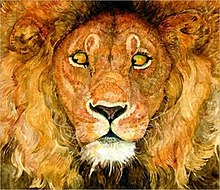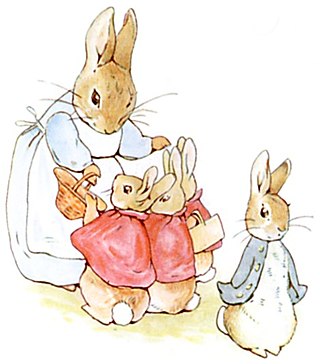
A picture book combines visual and verbal narratives in a book format, most often aimed at young children. With the narrative told primarily through text, they are distinct from comics, which do so primarily through sequential images. The images in picture books can be produced in a range of media, such as oil paints, acrylics, watercolor, and pencil. Picture books often serve as pedagogical resources, aiding with children's language development or understanding of the world.
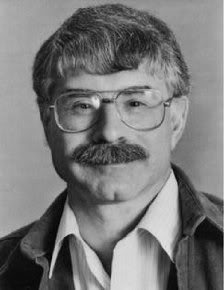
Arnold Stark Lobel was an American author of children's books, including the Frog and Toad series and Mouse Soup. He wrote and illustrated these picture books as well as Fables, a 1981 Caldecott Medal winner for best-illustrated U.S. picture book. Lobel also illustrated books by other writers, including Sam the Minuteman by Nathaniel Benchley published in 1969.
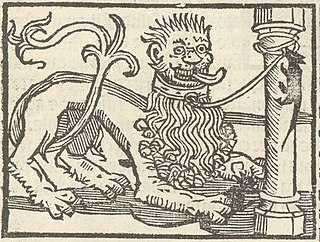
The Lion and the Mouse is one of Aesop's Fables, numbered 150 in the Perry Index. There are also Eastern variants of the story, all of which demonstrate mutual dependence regardless of size or status. In the Renaissance the fable was provided with a sequel condemning social ambition.

Ed Tse-chun Young was a Chinese-born American illustrator and writer of children's picture books. He has received many awards and recognitions, including the Caldecott Medal and Lifetime Achievement awards for his contributions as a children's illustrator.

Jerry Pinkney was an American illustrator and writer of children's literature. Pinkney illustrated over 100 books since 1964, including picture books, nonfiction titles and novels. Pinkney's works addressed diverse themes and were usually done in watercolors.
Molly Garrett Bang is an American illustrator. For her illustration of children's books she has been a runner-up for the American Caldecott Medal three times and for the British Greenaway Medal once. Announced June 2015, her 1996 picture book Goose is the 2016 Phoenix Picture Book Award winner – that is, named by the Children's Literature Association the best English-language children's picture book that did not win a major award when it was published twenty years earlier.
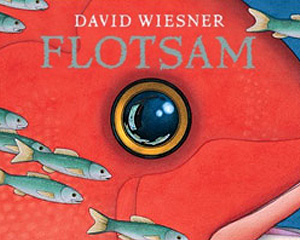
Flotsam is a children's wordless picture book written and illustrated by David Wiesner. Published by Clarion/Houghton Mifflin in 2006, it was the 2007 winner of the Caldecott Medal; the third win for David Wiesner. The book contains illustrations of underwater life with no text to accompany them.
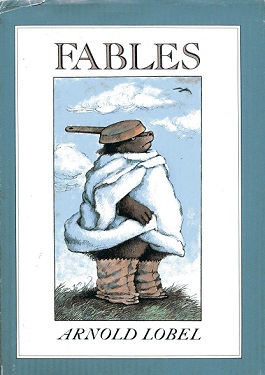
Fables is a children's picture book by American author Arnold Lobel. Released by Harper & Row in 1980, it was the recipient of the Caldecott Medal for illustration in 1981.
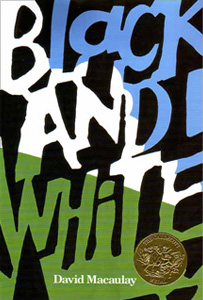
Black and White is a 1990 postmodern children's picture book by David Macaulay. Published by Houghton Mifflin Company, it received mixed reviews upon its release, but it was the recipient of the Caldecott Medal for illustration in 1991. The book tells four overlapping stories, each drawn with a distinct visual style. The four stories are "Seeing Things", about a boy on a train trip by himself, "Problem Parents", about siblings whose parents behave differently one night, "A Waiting Game", about people waiting for a train, and "Udder Chaos", about cows who escape and then return to their field.

A Sick Day for Amos McGee is a 2010 children's picture book written by Philip C. Stead and was illustrated by Erin E. Stead. The book, published by Roaring Brook Press, depicts a zookeeper who has bonded with the animals he cares for and who come and visit him one day when he gets sick. Phillip Stead wrote the book hoping his wife Erin would illustrate it after a period where she had become discouraged with her art. The book was well reviewed, and Erin won the 2011 Caldecott Medal for her illustrations. The book received praise for its woodblock illustrations and for its message about what friends will do to help and support each other.

A Ball for Daisy is a 2011 children's wordless picture book written and illustrated by Chris Raschka. The book tells the story of a dog named Daisy, who has a beloved ball destroyed and then replaced. Raschka won the 2012 Caldecott Medal for his illustrations in the book. The creation of the book took years but was praised for its ability to evoke emotion in the reader. A sequel, Daisy Gets Lost, was released in 2013.

This Is Not My Hat is a 2012 American children's picture book by the author and illustrator Jon Klassen. The story is told through the unreliable narration of a little fish, who has stolen a hat from a big fish and how the big fish reacts to the theft. It is a thematic follow-up to I Want My Hat Back (2011) and was meant to be a more literal sequel until Klassen took a suggestion to change which animals were in the story. The book was well received by critics who praised its dark or ironic humor which could only be understood by comparing the words of the little fish's narration against the events of the illustrations. In addition to several positive reviews, Klassen received the 2013 Caldecott Medal and the 2014 Kate Greenaway Medal becoming the first book to win both awards. This is Not My Hat was also a commercial success.

John Henry is a 1994 children's picture book by Julius Lester and illustrated by Jerry Pinkney. It is about the American legendary figure John Henry. In 1998, a 19-minute film adaptation of the book was narrated by Samuel L. Jackson and released by Weston Woods Studios.

Aesop's Fables is a 2000 collection of 61 fables from the Aesop oeuvre, retold by Jerry Pinkney. It includes stories about wolves, foxes, lions, dogs, mice, and donkeys.

Noah's Ark is a 2002 book by Jerry Pinkney. It is the biblical story of Noah's Ark, from construction of the vessel and gathering of the animals, to first harvest and the appearance of rainbows.

The Grasshopper & the Ants, by Jerry Pinkney, is a 2015 adaptation of the classic Aesop fable where a grasshopper relaxes through Spring, Summer, and Autumn, while a colony of ants work at gathering food for the Winter, but although initially refusing the grasshopper's request for help, they relent and invite him in to share.

The Tortoise & the Hare is a 2013 wordless picture book of Aesop's classic fable and is illustrated by Jerry Pinkney. It is about a tortoise and a hare that compete in a foot race with the tortoise surprisingly winning.

Rikki-Tikki-Tavi is a 1997 retelling of Rudyard Kipling's classic story by Jerry Pinkney about a mongoose that protects a family from two cobras. The book won a Caldecott honor in 1998 for its illustrations.

Wolf in the Snow is a 2017 wordless picture book by Matthew Cordell. The book was favorably received by critics and won the 2018 Caldecott Award. The story has drawn comparisons to fairy tales like Little Red Riding Hood. The nearly wordless book tells the story of a girl and wolf who each get lost in the snowstorm. Cordell used distinctive illustration techniques for the girl and the wolf.
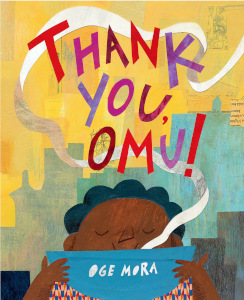
Thank You, Omu! is a 2018 picture book written and illustrated by Oge Mora. The story is about Omu, who cooks a stew and shares it with her neighbors; they show their gratitude by bringing her food. The book started as an assignment for a class of Mora's at the Rhode Island School of Design, where it was seen by an editor from Little, Brown. Thank You, Omu was well reviewed and a recipient of the 2019 Caldecott Honor for its illustrations. The book's mixed media drew praise for their detailed depictions of characters and locations.
